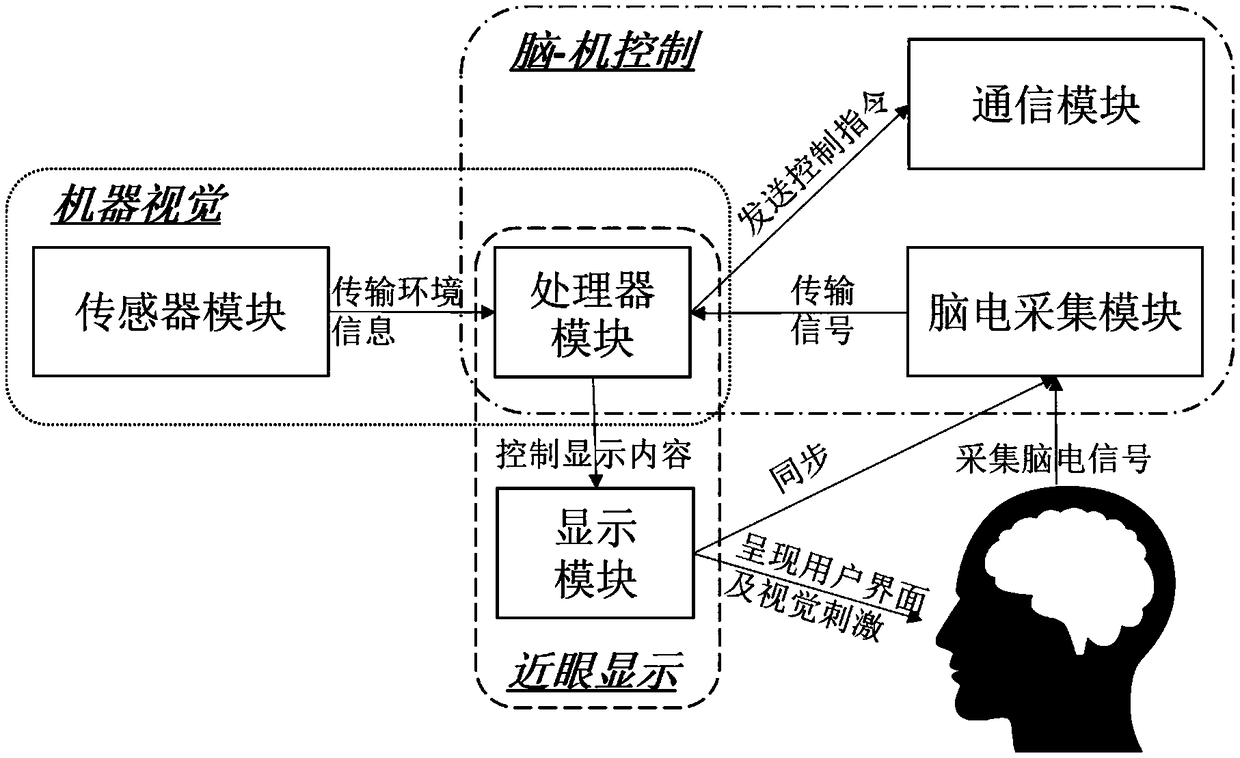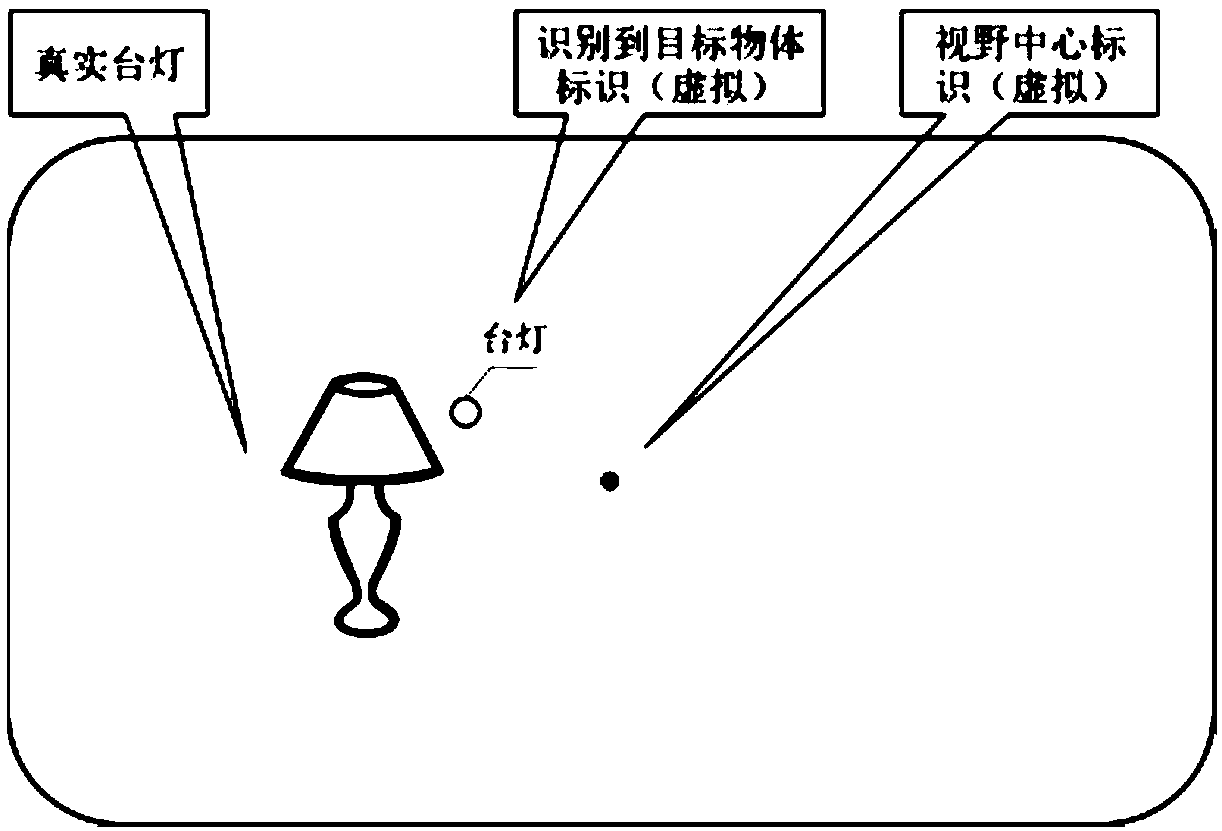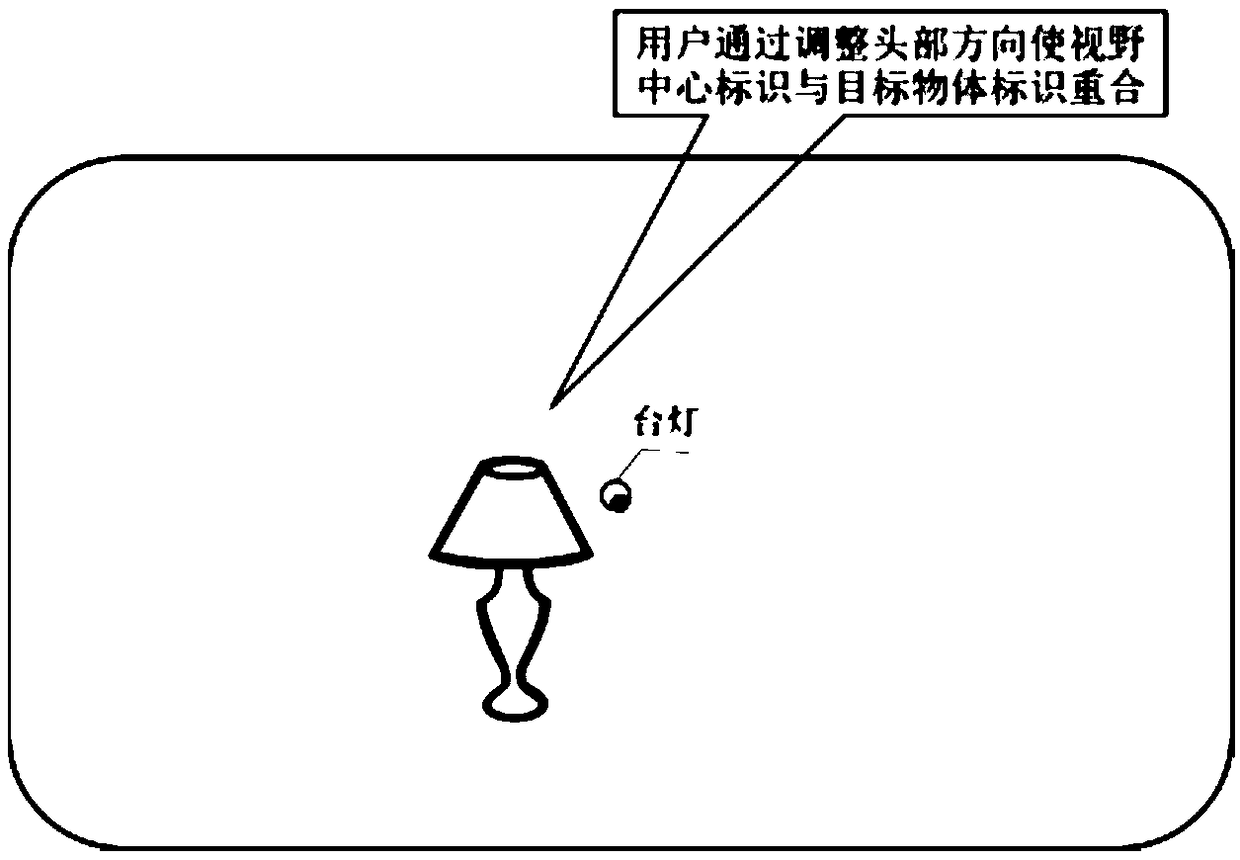Wearable brain-computer interface device, and human-computer interaction system and method
A machine interface and wearable technology, applied in the field of human-computer interaction, can solve the problem that the brain-machine interface system is difficult to carry around
- Summary
- Abstract
- Description
- Claims
- Application Information
AI Technical Summary
Problems solved by technology
Method used
Image
Examples
Embodiment 1
[0052] A portable brain-computer interface device, see figure 1 The hardware of the device includes: an EEG acquisition module, a display module, a sensor module, a processor module, a power supply module (not shown in the figure), a communication module and other modules, each of which is connected to the processor module and processed by controller module control. The whole device is integrated and worn on the user's head.
[0053] Among them, the EEG acquisition module includes: EEG electrodes and EEG amplifiers, etc., which are used for collecting (that is, collecting through EEG electrodes) and releasing EEG signals (that is, amplifying EEG signals through EEG amplifiers), The amplified EEG signal is digital-to-analog converted. The EEG acquisition module is controlled by the processor module and sends the collected EEG signals to the processor module.
[0054] Further, the display module includes: a micro-projector, a prism, etc., used for near-eye display of visual s...
Embodiment 2
[0061] The solution in Embodiment 1 is further introduced below in conjunction with specific devices, and details are described below:
[0062] 1. EEG acquisition module:
[0063] The EEG acquisition module includes: EEG electrodes and EEG amplifiers. EEG electrodes can be dry electrodes or wet electrodes, and the covered areas should include: visual cortex, forehead, top of the head, etc.
[0064] The available lead configurations are: POz, PO3, PO4, PO5, PO6, Oz, O1, O2, with the reference electrode placed on the top of the head and the ground electrode placed on the forehead.
[0065] During use, the impedance between each electrode and the reference electrode should be lower than a certain threshold, and the range of the impedance threshold for reference is 20,000 ohms to 50,000 ohms. The EEG amplifier amplifies the weak EEG signal, performs digital-to-analog conversion, and transmits the digital signal to the processor module.
[0066] In the specific implementation, t...
Embodiment 3
[0081] A mobile wearable human-computer interaction system combining brain-computer interface, near-eye display and machine vision, comprising: a brain-computer control unit, collecting EEG signals through electrodes placed on the surface of the scalp, decoding the EEG signals to identify user control intention;
[0082] A near-eye display unit that displays the visual stimuli required for the interactive interface and the brain-computer interface;
[0083] A machine vision unit that identifies controllable devices in the environment;
[0084] The mobile wearable human-computer interaction system combining brain-computer interface, near-eye display and machine vision realizes the control of external equipment based on brain control and does not rely on limbs in a mobile environment.
[0085] The system is based on the hardware modules in Embodiments 1 and 2, and the above-mentioned hardware in Embodiments 1 and 2 functionally constitutes a brain-computer control module, a nea...
PUM
 Login to View More
Login to View More Abstract
Description
Claims
Application Information
 Login to View More
Login to View More - R&D
- Intellectual Property
- Life Sciences
- Materials
- Tech Scout
- Unparalleled Data Quality
- Higher Quality Content
- 60% Fewer Hallucinations
Browse by: Latest US Patents, China's latest patents, Technical Efficacy Thesaurus, Application Domain, Technology Topic, Popular Technical Reports.
© 2025 PatSnap. All rights reserved.Legal|Privacy policy|Modern Slavery Act Transparency Statement|Sitemap|About US| Contact US: help@patsnap.com



